[...] Students need to select the best methods and train with a focused concentration. If you hope to learn such material, you have to practice it with reverence. At the very least, it can strengthen the body, but when used to its fullest, it is a means of defense against attack. If you choose the wrong methods, you will go astray in your training. If you pick an overly fierce style, one that uses excessive hardness, you will break your body down, or if you pick an overly flowing style, one that uses excessive softness, you will not build your body up.
Chen Zhaopi, "General Explanations of Taiji Boxing Fundamentals, 1930
Translation Paul Brennan 2019
What do we actually do in a Taiji class?
Here's what to expect:
Solo practice
Our practice is made of a wide range of exercises and a large part is done solo. Solo work consists of warm-up exercises, qigong, drills, footwork (bu fa) exercises, standing exercises, body-centered meditation and most of all two bare hand forms (yi lu and er lu, first and second form). The first form (see video) is the core of our training. This sequence of movements can be considered as a compendium of techniques which are to be learned gradually. It is also the student's base material to learn good habits in terms of movement, as well as an ideal testing ground for our body method. Indeed Chen-style tai chi has strict but meaningful physical requirements and principles which give depth to simple actions like standing or stepping.
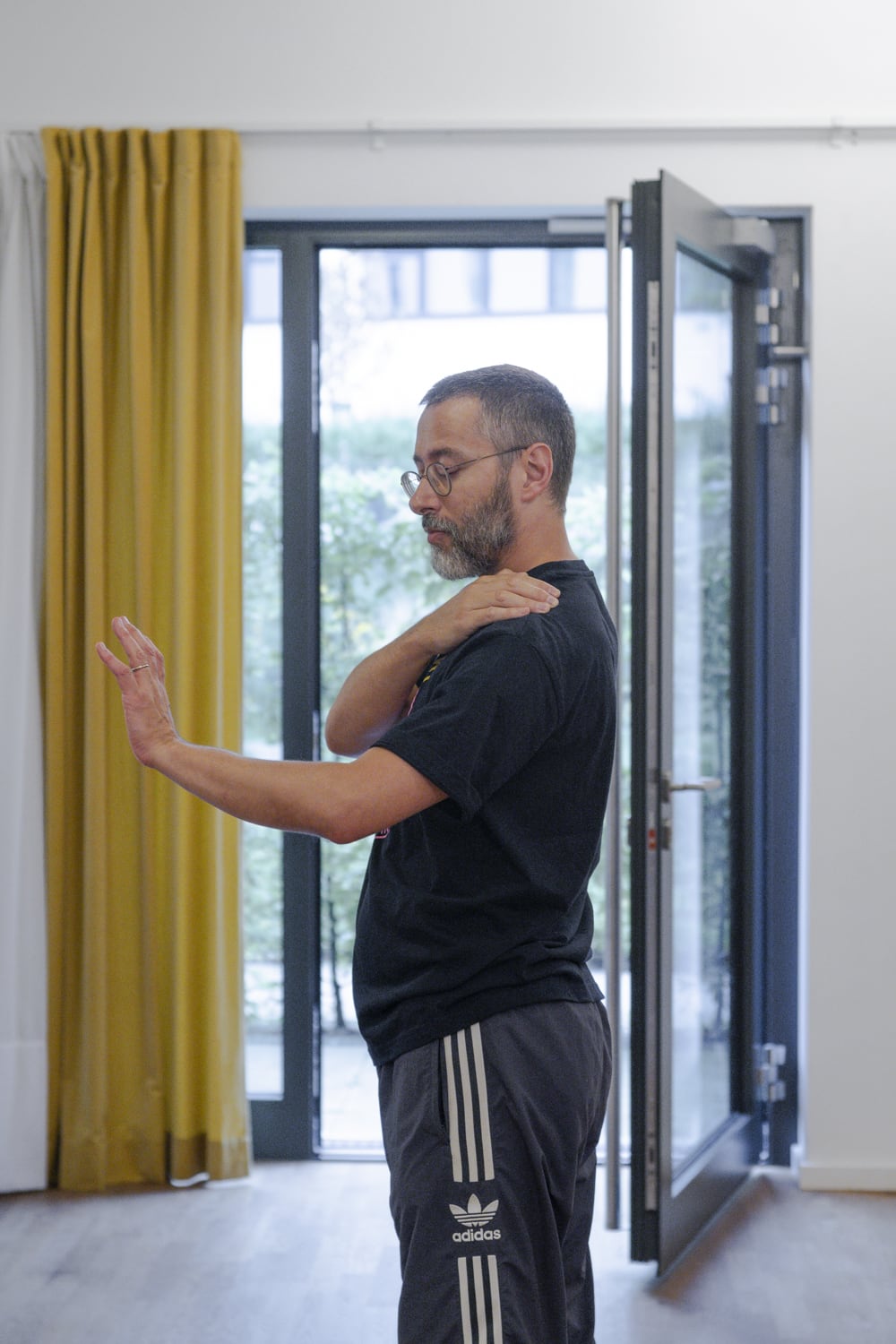
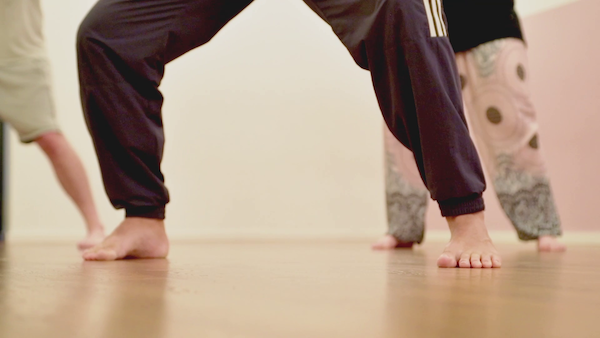
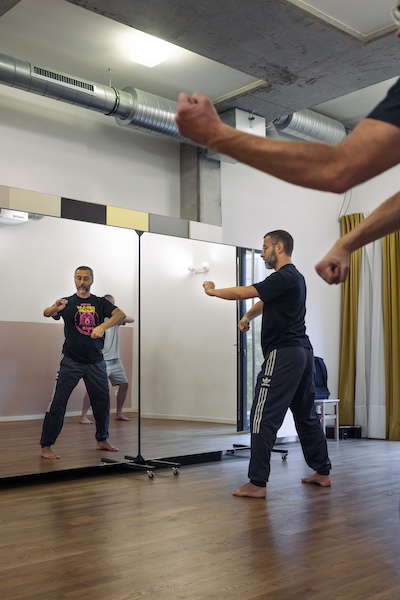
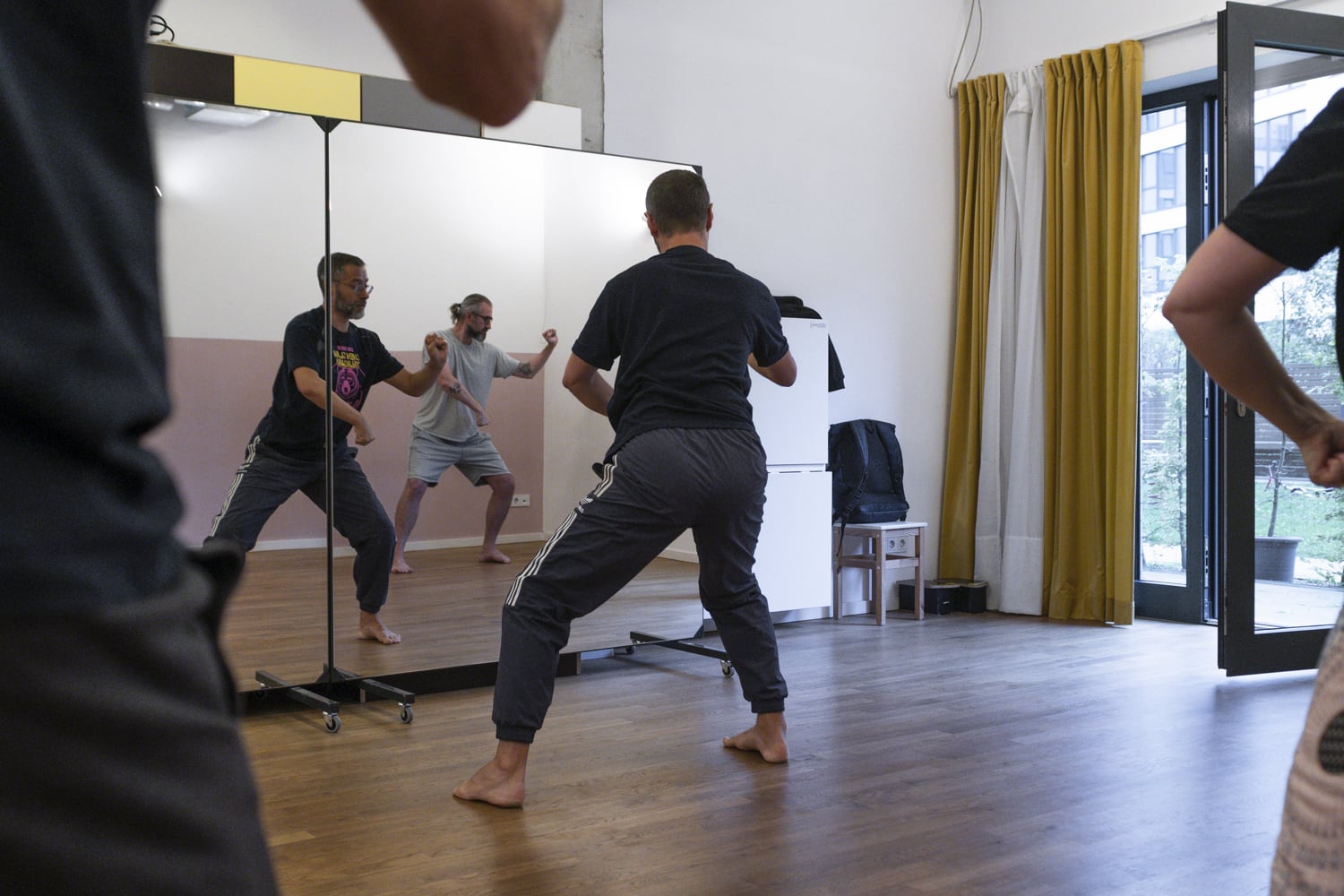
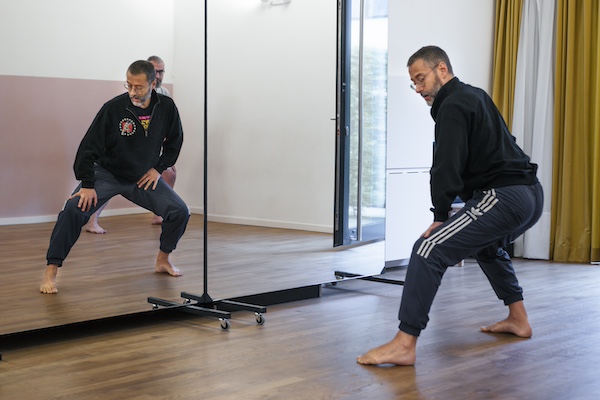
Partner practice
The other part of training consists of partner exercises.
They include simple yet crucial exercises, meant to develop awareness of one's own structural stability and of the power pathways connecting the force of our partner to us,
but also more or less complex tuishou routines ("push hands" patterns), along with martial applications ("yongfa"),
"qinna" (joint locks) training and fighting drills, all things which will go deeper into the handling of incoming force.
The beauty of taiji training is that the solo practice will nurture the partner practice, and the partner practice will tremendously inform your solo practice. You could say it is the very definition of a virtuous circle!

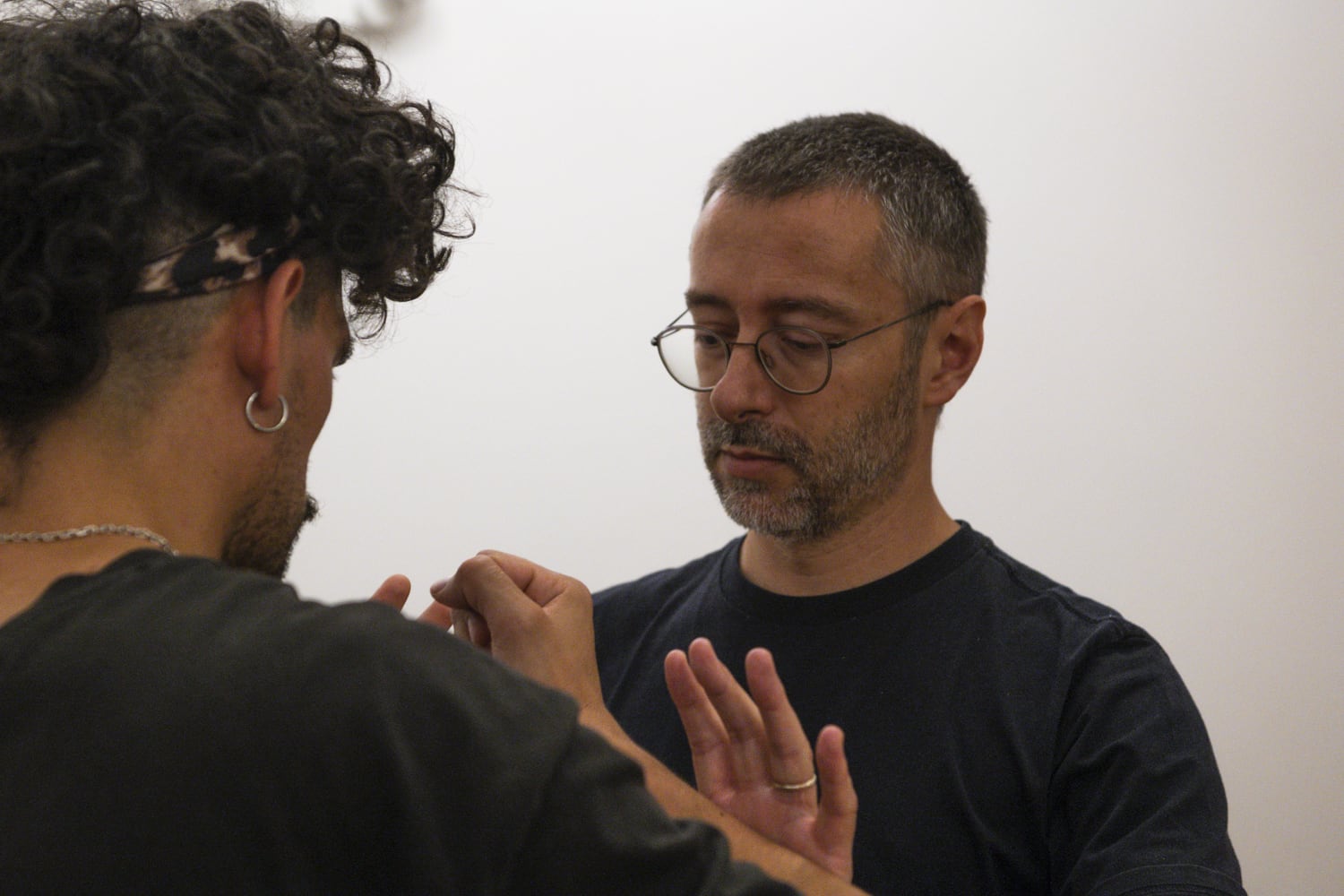

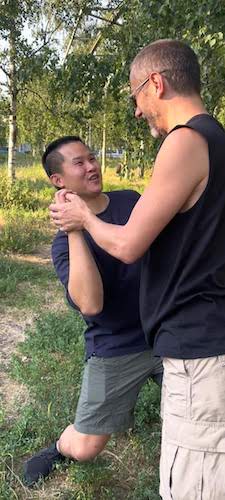
What are we focusing on during training?
Basic training focuses on postural alignment and coordination. It helps building the necessary foundation and can boost proprioception, stability and concentration.
At the same time we work on creating connections throughout the body, slowly integrating all parts into a structured whole, and building a core strength that allows a shenfa (body mechanics) to take place.
We want to subtly mould and train the body in order to
1) stay rooted and connected at all times –
2) generate power –
3) handle incoming power (from an opponent for instance)

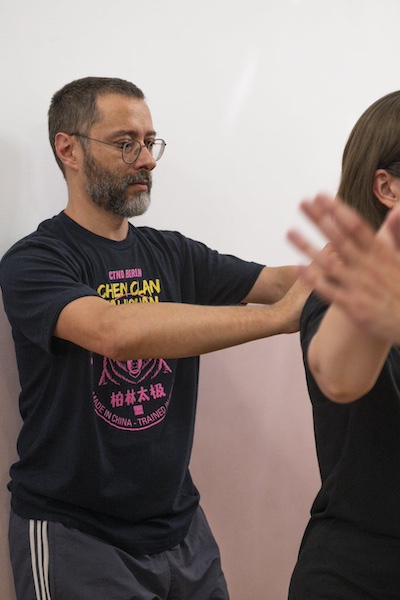
Contrary to popular belief, taiji training is not all about relaxation. In the beginning, relaxation is important and a prerequisite for joint mobility. However, if you want to continue working towards gongfu, the opening of the joints must lead to a tensile tissue structure as well as full-body strength and forces. The training can here become more strenuous and the concept of relaxation takes on a new meaning: while working on things can be felt as intense, you still want to relax, i.e. calm down your nervous system. You will adapt the training to your own physical condition, needs, level of skill and goals. As you gain in strength and skill, you can increase the intensity of the training and make body qualities you once saw as unattainable slowly become always more familiar. This embodiment of qualities takes time: don't be in a rush, trust the process.
Learning gongfu is learning a body method, not a battery of techniques – but from the method itself are derived countless techniques. A combat method complements the movement method. Over time, the practice integrates the breathwork and more and more attention is paid to the correct internal forces and pulls.
Come for a fix, stay for the journey!
Why should we train taiji?
The reasons for following such a training are legion.
Since it's a very technical and practical training, you may want to practice taiji to exercise and
unify your body in a sustainable way (thus potentially preventing injuries), get new insights on movement methods, work on healthy strength,
structure and/or self defense, or just take care of your bones, muscles, fasciae and other soft tissues.
You can also practice taiji in order to train your awareness and discipline your mind,
learn about ancient yet topical Chinese concepts and go on a quest to learn how to be tranquil and grounded while staying "in charge".
There is enough depth in taiji for a lifetime, it can be a fascinating and rewarding personal development companion.
Some want the whole package and that is fine since it is the primary goal of taiji to train and fine tune both body and mind so that they work in balance and agreement.
Our training contains a lot of mental training, with a focus on attention, intention/imagination, breathing work, proprio- and interoception.
It all combines and uses the resources of mind and body until one notices they are actually one. Eventually training and life may also become one.
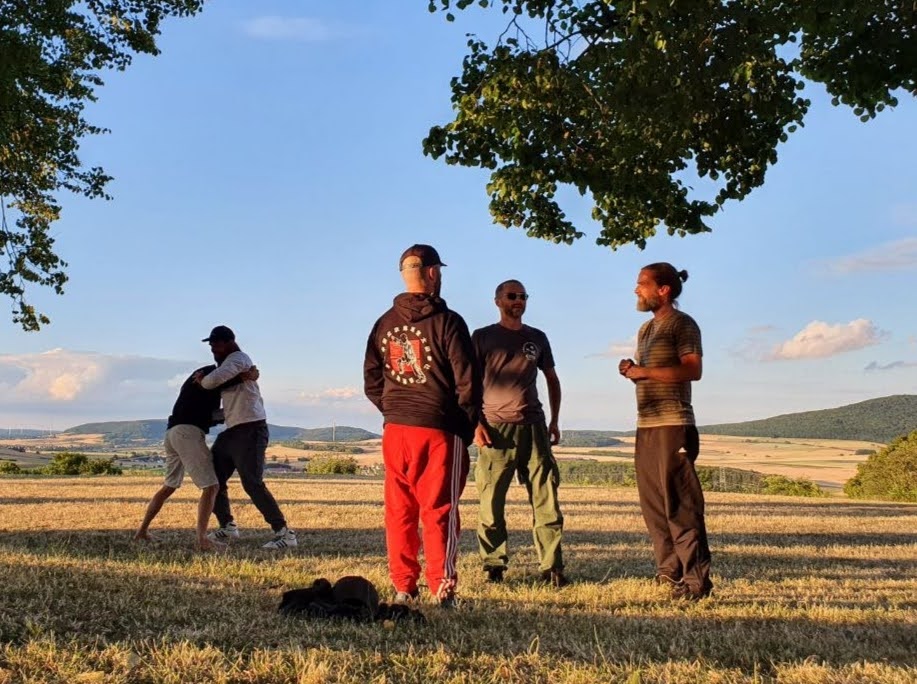
Curious to see how this kind of training feels? Come to a class and try it out. Have a look at how our classes are structured or see if our private coaching offer is a good fit for you.